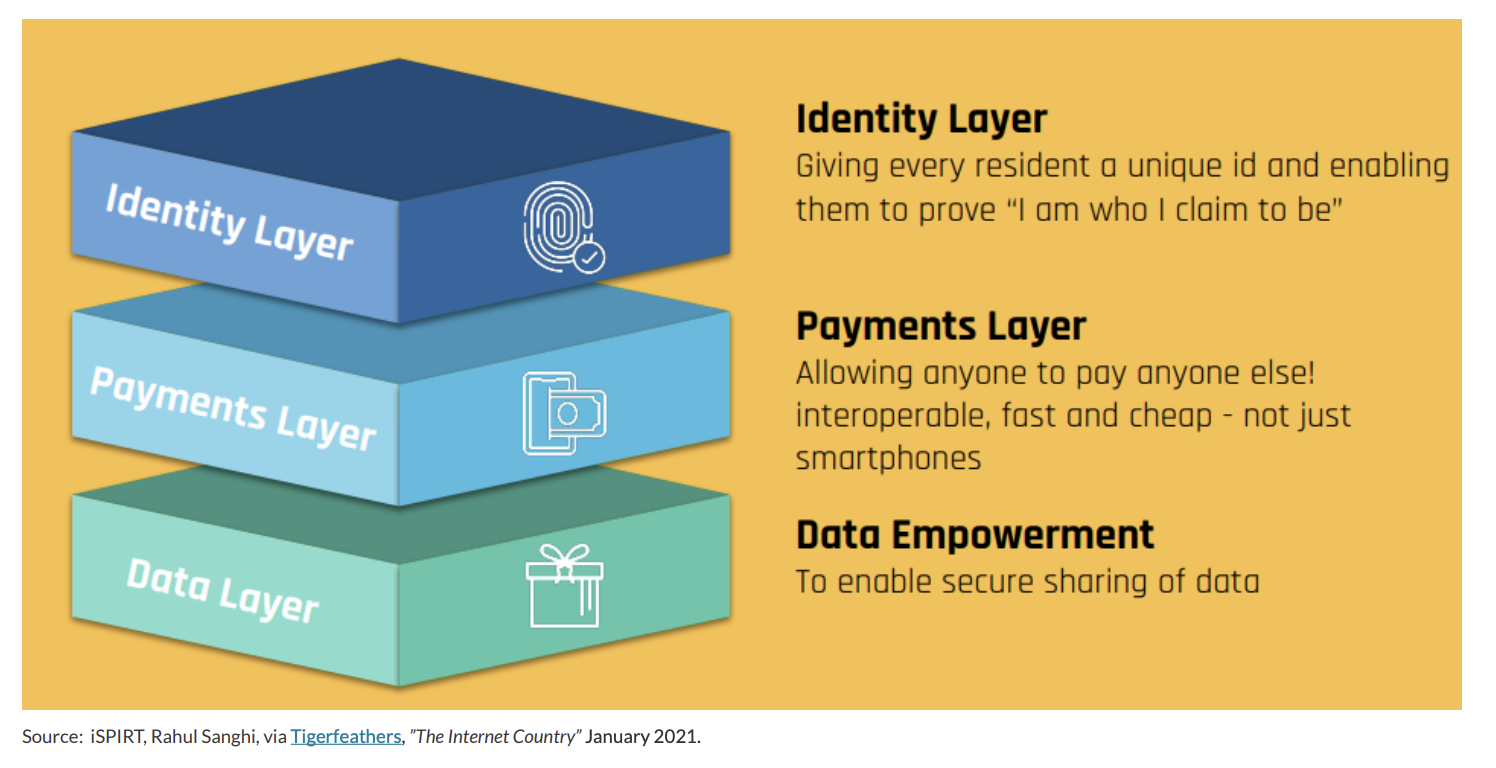India is rapidly transitioning into the age of connectivity, climbing the ranks compared to the rest of the world. While the country is investing heavily in both physical and digital infrastructure, what really sets India apart from its emerging and frontier market peers is its "digital public infrastructure", also known as the 'India Stack'. This infrastructure is one-of-a-kind and is proving to be a crucial component of India's growth story. No other developed or emerging market country has anything similar to the India Stack, making it a unique and compelling investment driver.
In 2009, India embarked on several projects that, at the time, we were aware of but didn't fully appreciate their significance for India's digital economy and growth. However, now we can clearly see that these projects have not only laid the groundwork for a thriving digital economy but also have the potential to fuel further economic growth to come.
This mission was spearheaded by Nandan Nilekani, Infosys co-founder and Chairman, who agreed to serve as the Chairman of a new national identification card system (think a Social Security number) called Aadhaar, which translates to “foundation”. At that time, a serious impediment to India’s growth and development was that very few people had an identification card of any type. In fact, less than half of births were even reported to the government. This led to a very low rate of financial inclusion.
The development of this digital public infrastructure over the past 15 years is now only beginning to reveal its power and bear fruit. Within the India Stack is a set of thoughtful components and protocols that have been implemented to support the country’s digital transformation and enable a range of digital services. This secure digital foundation is the key to scaling numerous applications across both government and private sectors.
The India Stack consists of three key components:

Aadhaar:
Aadhaar (which means “foundation) is a biometric identification system that assigns a unique 12-digit identification number to each Indian resident. It is based on individuals’ demographic and biometric information, such as fingerprints and iris scans. Aadhaar serves as a digital identity for citizens, allowing them to access various government services and private sector applications.
The system was voluntary to join. There are now 1.3 billion Indians enrolled in the Aadhaar system. Soon after launching Aadhaar, a KYC (“know your customer”) layer was added to Aadhaar that would allow people to open a bank account simply with their fingerprints and iris scan. This led to a massive increase in financial inclusion in the country as hundreds of millions of people opened their first bank accounts using Aadhaar.

Source: Unique Identification Authority of India, Deloitte
Unified Payments Interface (UPI):
In 2016, Nandan was asked to lead the creation of a second program called the Unified Payments Interface (“UPI”), a real-time payment system that facilitates instant fund transfers between bank accounts using smartphones. It allows individuals to send and receive money, pay bills, make merchant payments, and more, directly from their bank accounts. UPI has gained significant popularity in India and has simplified digital payments.
Frankly, we were concerned that UPI might pose a threat to PAYTM, the Indian fintech leader that was private at the time but was among those most likely to IPO at some point. (PAYTM did an IPO in 2021 and is now part of all our strategies. See more in the Company Visits section of this report.) Now, one can say “it’s all coming together” for the India Stack.

Source: National Payments Corporation of India
Digilocker:
Digilocker is a cloud-based platform that provides individuals with a digital storage space to store and share their official documents and certificates securely. It eliminates the need for physical documents and enables easy access to important records, such as educational certificates, driving licenses, and government-issued documents.
These components of the India Stack work together to create a digital ecosystem that enhances convenience, connectivity, efficiency, and accessibility for Indian citizens. The goal is to enable the delivery of various services, including financial services, healthcare, education, and more, through digital means while ensuring security and privacy. No other country on the planet has anything like the India Stack. We contend that the true power of this digital public infrastructure will not just facilitate India’s economic growth but accelerate it and largely define it. This is India’s “secret weapon”. It is thanks to the India Stack that investors are now able to tap into an extremely unique investment opportunity and what we believe to be the perfect modern emerging market.
Interested in learning more about how to invest in India's digital growth? The India Internet Index (ticker: INQQ) is one way for investors to gain exposure to the digitization occurring today.